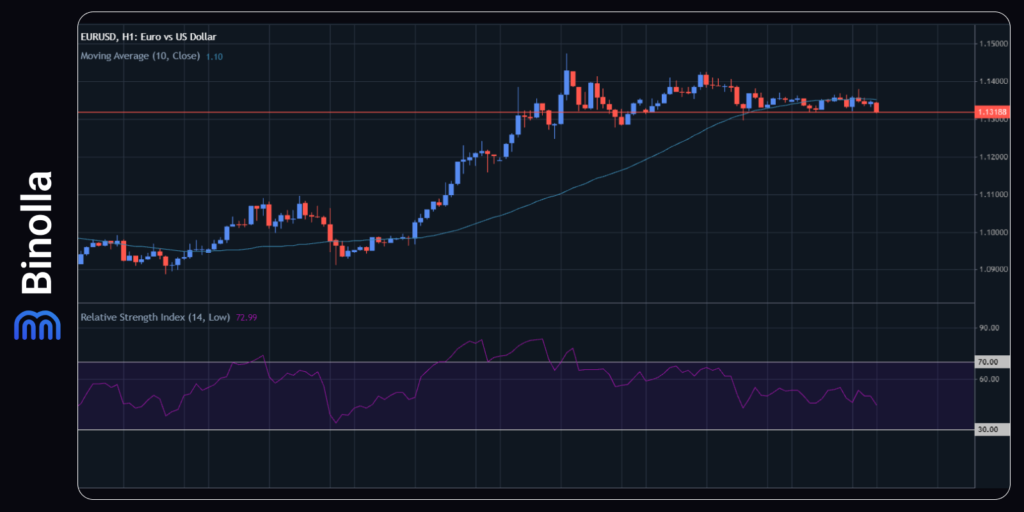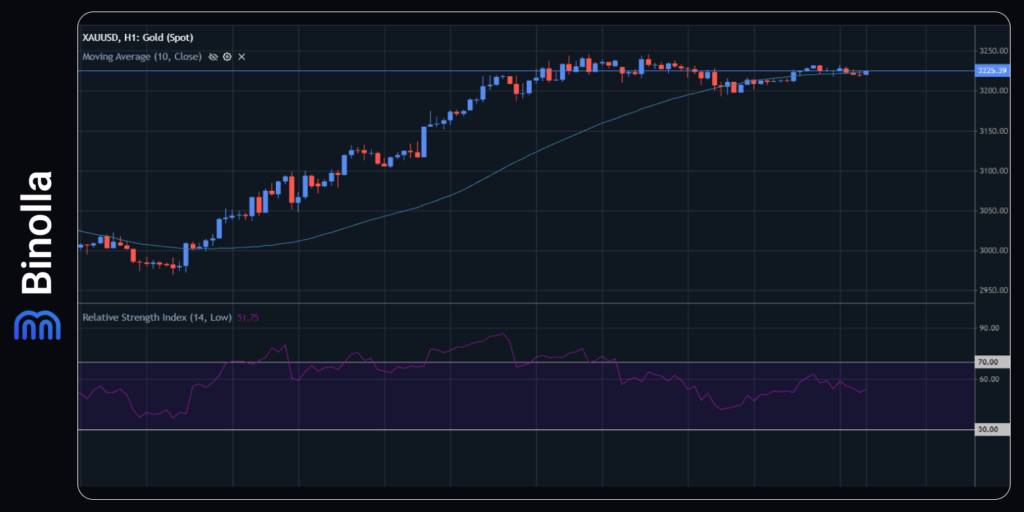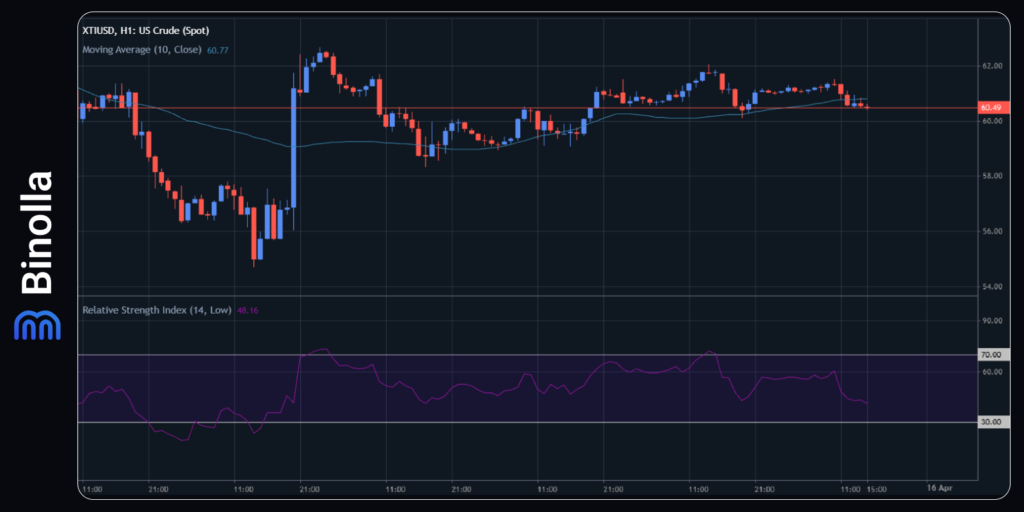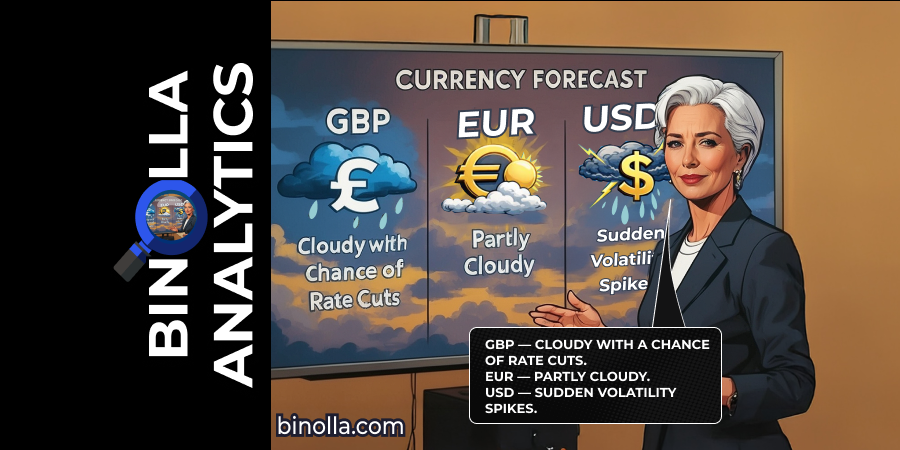US Dollar Rebounds: Trump’s New Rhetoric and Fed Doubts on Inflation Support USD

The US president postponed import tariffs for 90 days last week, which allowed risky assets to return to growth. Market participants now believe that a deal between the United States and their counterparts is possible and that tariffs will be at least lower. Moreover, Donald Trump exempted electronics and semiconductors from additional taxes, which added more optimism to the financial markets.
Meanwhile, Atlanta Federal Reserve Bank head Raphael Bostic mentioned on Tuesday that the path towards a 2% inflation may be longer. This gave some support to the US dollar as market participants now expect that the Fed is unlikely to make more cuts beyond the two easing decisions that were planned earlier.
Contents
EUR/USD: The ECB is Going to Cut Rates
The ECB meeting will take place on Thursday. According to the latest expectations, the central bank is going to cut rates by 25 bps this time. This exerts some pressure on the currency pair, but the focus will be on the ECB press conference that will take place later that day. It is recommended to pay attention to what officials will say about the current economic situation and how they evaluate the GDP growth in 2025.
According to the latest data, the German ZEW Economic sentiment fell in March to -14, which pushed EUR lower. This is the result of the previously announced tariffs by the US president. However, the situation may change in April as new taxes are postponed for 90 days.

From the Technical analysis perspective, the currency pair is trading below the SMA50, which means that bears are currently controlling the market. Short positions will be preferable if the currency pair moves below 1.1300. On the upside, the currency pair is restricted by the SMA50. Buyers can open trades if the price moves above 1.1390.
GBP/USD: The UK Labor Market Data Supports GBP, but Inflation Statistics are Ahead
The British pound is trading above the ascending trendline and is supported by the UK labor market data. According to the latest release, the unemployment rate remains at 4.4%, while the Claimant count change was significantly below forecasts. This data allowed GBP/USD to set new local highs.
However, market participants are now evaluating the upcoming UK inflation data that will be published on Wednesday. According to forecasts, the CPI is likely to slow down by 0.1% as compared to February, which may push the British currency lower as this will provide more space for speculations on the possible rate cut.
It should be mentioned that, in general, bullish sentiment is in place. However, any news about the tariffs may exert pressure on GBP/USD.

From the technical analysis perspective, the currency pair is trading above the SMA50, which means that bulls are controlling the market. The RSI indicator is close to the overbought area, which may result in a downside correction in the near future. On the upside, traders can place long orders if GBP/USD moves above 1.3260. Sellers can engage if the currency pair breaks below the SMA50.
XAU/USD: Gold Makes Attempts to Set New Records
While the risk-off mood is now turned off, traders and investors still hold the precious metal for several reasons. First, the tariffs are postponed, but they are not abolished. The US president can return to his tariff rhetoric at any moment.
Second, fears of the global recession are now higher than ever, and this stimulates market participants to buy more gold. However, the precious metal is unable to make his road higher due to the possibility of the US dollar rebound.

From the technical analysis perspective, gold is trading close to the historical highs. XAU/USD just rebounded from them, but the downside is limited. The precious metal stays close to the SMA50, which means that neither of the sides is controlling the market. On the downside, selling XAU/USD will be effective from 3200. When it comes to long positions, buyers can engage if gold breaks above 3240.
WTI: Oil Moves Lower Amid Demand Forecasts
OPEC lowered its forecasts for oil demand for the upcoming years. The main reason for the revision was new tariffs by the US president. While they are postponed, there is no guarantee that Donald Trump will not bring them to the table again after 90 days. Moreover, trade tensions between China and the United States are still in place, even though some exemptions were made for electronics and semiconductors.
The latest decision by OPEC+ exerts some pressure on crude oil as well. The cartel has decided to increase Oil production in May by 411,000 barrels, which may increase the global supply.

From the technical analysis perspective, Oil is trading below the SMA50, which is a bearish signal. The asset is currently testing 60,40, which prevents it from moving toward 60. Short positings will be preferable from 60, while if you are looking for long trades, wait until the price moves above the SMA50.







